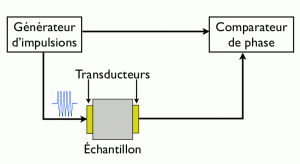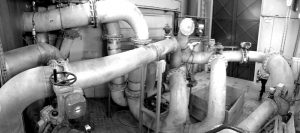Ultrasound velocity and attenuation

Ultrasound velocity is the probably the most sensitive probe to phase transitions. We use it to detect phase transition as a function of temperature or magnetic field. A transducer (a piezoelectric crystal) is glued on the surface of the sample to generate an acoustic pulse which travels back and forth in the sample, generating echos measured with another transducer. When travelling through the sample the acoustic pulse energy is absorbed by available degrees of freedom in the sample, causing a decay of the echo amplitude with time. This decay is related to the ultrasound attenuation which can be measured simultaneously with ultrasound velocity.
Magnetic fields

The ultrasound technique is versatile and can be used in the harsh environment of both static and pulsed high magnetic fields. We regularly use the european high magnetic field facilities and explore the phase diagram of new exotic materials up to 90 T in pulsed magnets and 37.5 T in DC resistive magnets. In addition we have access to a 20 T superconducting magnet in Grenoble (Supermag, LANEF).
